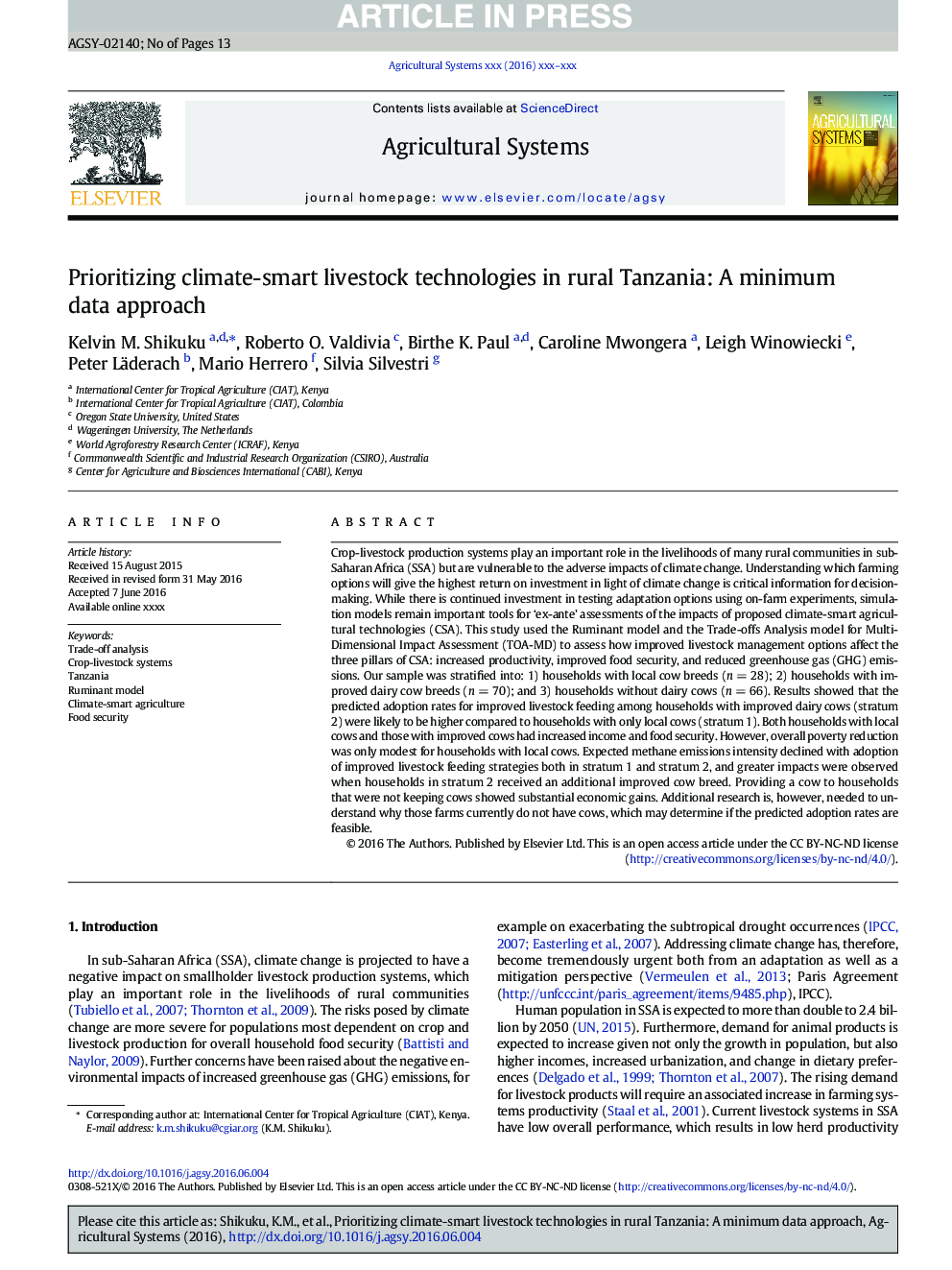| کد مقاله | کد نشریه | سال انتشار | مقاله انگلیسی | نسخه تمام متن |
|---|---|---|---|---|
| 5759771 | 1623219 | 2017 | 13 صفحه PDF | دانلود رایگان |
عنوان انگلیسی مقاله ISI
Prioritizing climate-smart livestock technologies in rural Tanzania: A minimum data approach
ترجمه فارسی عنوان
اولویت بندی فن آوری های آب و هوا هوشمند دام در روستای تانزانیا: رویکرد حداقل داده
دانلود مقاله + سفارش ترجمه
دانلود مقاله ISI انگلیسی
رایگان برای ایرانیان
کلمات کلیدی
تجزیه و تحلیل تجاری، سیستم تولید محصولات کشاورزی، تانزانیا، مدل رامینه، آب و هوا هوشمند کشاورزی، امنیت غذایی،
موضوعات مرتبط
علوم زیستی و بیوفناوری
علوم کشاورزی و بیولوژیک
علوم کشاورزی و بیولوژیک (عمومی)
چکیده انگلیسی
Crop-livestock production systems play an important role in the livelihoods of many rural communities in sub-Saharan Africa (SSA) but are vulnerable to the adverse impacts of climate change. Understanding which farming options will give the highest return on investment in light of climate change is critical information for decision-making. While there is continued investment in testing adaptation options using on-farm experiments, simulation models remain important tools for 'ex-ante' assessments of the impacts of proposed climate-smart agricultural technologies (CSA). This study used the Ruminant model and the Trade-offs Analysis model for Multi-Dimensional Impact Assessment (TOA-MD) to assess how improved livestock management options affect the three pillars of CSA: increased productivity, improved food security, and reduced greenhouse gas (GHG) emissions. Our sample was stratified into: 1) households with local cow breeds (n = 28); 2) households with improved dairy cow breeds (n = 70); and 3) households without dairy cows (n = 66). Results showed that the predicted adoption rates for improved livestock feeding among households with improved dairy cows (stratum 2) were likely to be higher compared to households with only local cows (stratum 1). Both households with local cows and those with improved cows had increased income and food security. However, overall poverty reduction was only modest for households with local cows. Expected methane emissions intensity declined with adoption of improved livestock feeding strategies both in stratum 1 and stratum 2, and greater impacts were observed when households in stratum 2 received an additional improved cow breed. Providing a cow to households that were not keeping cows showed substantial economic gains. Additional research is, however, needed to understand why those farms currently do not have cows, which may determine if the predicted adoption rates are feasible.
ناشر
Database: Elsevier - ScienceDirect (ساینس دایرکت)
Journal: Agricultural Systems - Volume 151, February 2017, Pages 204-216
Journal: Agricultural Systems - Volume 151, February 2017, Pages 204-216
نویسندگان
Kelvin M. Shikuku, Roberto O. Valdivia, Birthe K. Paul, Caroline Mwongera, Leigh Winowiecki, Peter Läderach, Mario Herrero, Silvia Silvestri,
